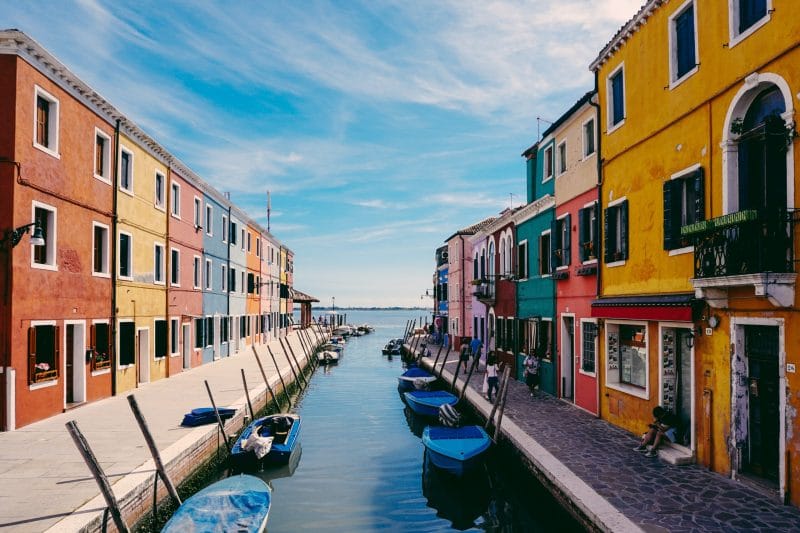If you’re not sure what solar canals are, or have only just heard of them, then you’re not alone. But they are well worth investigating as they are an innovative new aspect to the solar energy solution to environmental concerns.Read on to find out more about what solar canals are, how they function, and some of the benefits of solar canals.
What are solar canals and how do they work?
In order to understand what exactly solar canals are, it’s important to understand the context in which they have emerged.As global warming ramps up, many regions of the world are experiencing increasing water shortages. This is triggering a humanitarian crisis as more and more people turn to contaminated drinking water or simply do not have access to water as it’s too expensive and out of reach. Solar canals have emerged as one possible infrastructure solution. Solar canals are made up of a combination of solar panels and solar batteries, which are placed above the water in the canal to convert sunlight into electricity. The energy generated is then used to pump water into a central point and distribute it into surrounding neighbourhoods. One of the benefits of solar canals is that they prevent water evaporation and are more efficient than other water distribution systems as they do not need to be located near a power source.
Where are solar canals being used?
Although still not a mainstream solar energy solution, solar canals have been rolled out in a handful of countries.Since 2012, the Indian ‘Canal Solar Power Project’ in the small village of Gujarat has been up and running. This 1MW solar canal stretches across 750 metres, and has been a saving grace for Gujarat, which didn’t have electricity until canal-top solar was installed.Since then, other projects have followed, such as a 100MW canal-top solar power project on top of the branch canals off the Narmada River.More recently, California has begun to explore the possibilities surrounding solar canals in a bid to tackle climate change and avoid water evaporation. In fact, a 2021 study by the University of California found that installing solar PV above all of 4000 miles of California’s canals would save more than 65 billion gallons of water per year due to reduced evaporation caused by shading. California’s San Joaquin Valley will be the first to develop a solar canal prototype, in the Turlock Irrigation District.Supported by the state Department of Water Resources, this mile-long demonstration project will help to assess and evaluate the benefits of solar canals and provide valuable insights for future solar canal projects in the USA.It’s estimated that the water saved by Californian solar canals alone could be sufficient to irrigate 50,000 acres of farmland or supply water to 2 million people.
What are the benefits of solar canals?
We have already touched upon some of the benefits of solar canals, but let’s take a closer look.
- Reduced water evaporation
An estimated 90% of the freshwater we use is lost through evaporation and transpiration.Without freshwater supplies, lands become increasingly arid, making it difficult to irrigate farmlands and supply clean drinking water.UC Merced case studies revealed that solar canals in California could save 63 billion gallons of water annually. The panels also combat aquatic weed growth, promoting healthier water.
- Improved air quality
Another of the great benefits of solar canals is how they can contribute to reducing air pollution.Fossil fuels are not used during the construction of solar canals, and solar arrays replace ageing diesel pumps and generators, meaning that the air is much cleaner in general.Cleaner air can only be a good thing. Better air quality results in healthier people, which in turn takes a strain off health services and less money spent on curative medicine.
- Renewable energy source
Climate change is a big issue, and many world leaders have pledged to meet net zero emissions by 2050. That’s only attainable if we stop relying on fossil fuels like coal or natural gas.Solar energy is a great alternative power source, and as long as the sun exists we will be able to harvest natural energy from it, with no adverse consequences for the planet.We are seeing that the Californian solar canals are capable of generating substantial amounts of electricity, around 13 gigawatts of renewable energy capacity. That’s around 50% of what’s needed to meet California’s clean electricity goals.Combining solar power with battery storage can help build microgrids in rural areas, or in remote places with weak infrastructure. The solar option serves as a more resilient alternative power source in the face of extreme weather, human error and wildfires.
- Panels stay cool over water
Solar panels are more efficient when placed over water too, as water heats up more slowly than land. The water flowing beneath the panels cools them down by about 10 degrees fahrenheit, which in turns makes them 3% more productive.
- Land conservation
Along with climate change comes drier lands, which makes supplying water to farms for irrigation a more complex task.Severe droughts in the last few decades have led to wells drying up, sparked intense wildfires, and led to water restrictions in various countries.Solar canals not only generate renewable energy and save water. They also mean that it might no longer be necessary to use up so much natural habitat or farmland as space for solar farms.That shift to water from land could potentially have positive side-effects for surrounding wildlife, ecosystems and habitat. What we have looked at here are just a few of the benefits of solar canals. As this technology advances and develops, there will surely be yet more positive outcomes for investing in solar renewable energy resources. Click here to find out more about other emerging solar energy solutions on the horizon.

